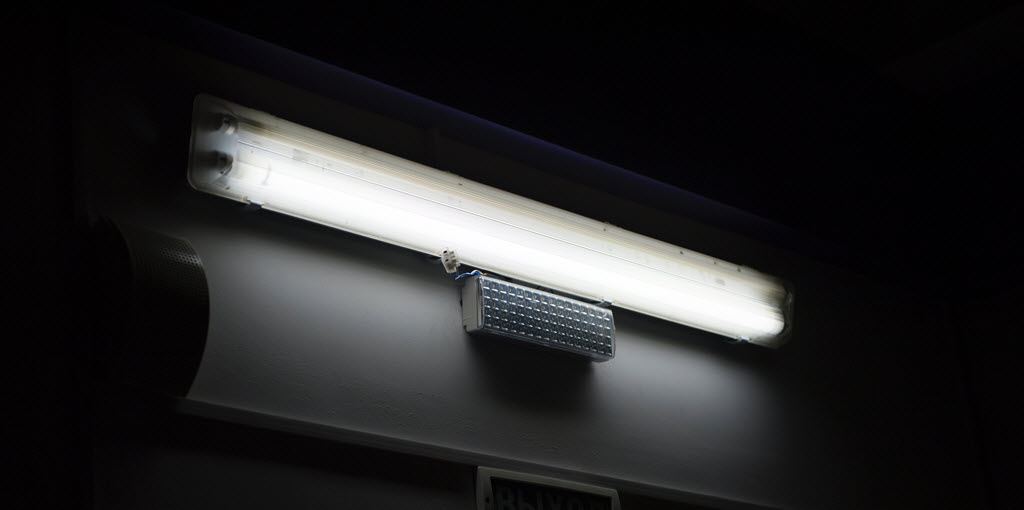Lighting at the workplace is an important factor that contributes to organizational productivity and efficiency. Researchers have demonstrated that satisfaction with lighting contributes to greater environmental satisfaction, which in turn enhances greater job satisfaction that ultimately increases organizational commitment.
The federal government’s Occupational Safety and Health Administration (OSHA), responsible for ensuring workplace safety has established guidelines in lighting, specifically for the minimum amount of lighting required for working areas.
The wiring standards, the safety of lighting outlets and controls, the minimum clearance from light fixtures, artificial light safety and emergency lighting are all listed in its guidelines. OSHA standard 1926.56 established minimum lighting requirements in foot-candles ((ftc.) which is the amount of illumination produced by a candle from 1 foot distance) for a variety of work environments which include offices, hallways and exit ways.
OSHA requires that a workspace environment be specifically organized to reduce glare and excessive lighting, which can result in eye strain and headaches.
Are fluorescent lights making you tired?
Do you feel sleepy towards the end of the day? Your lighting may be robbing you of a restful nights sleep.
Worksite and Office Lighting
How bright should office lighting be?
- The standard lighting for general construction area, warehouses, corridors, hallways, and exit ways must be lit to a minimum 5ftc.
- Concrete placement, evacuation and waste areas, loading platforms, active storage areas, refuelling, and field maintenance areas must be lit to a minimum of 3ftc.
- General construction plants and shops including indoor bathrooms and mess rooms must be lit to 10ftc.
- First aid stations, infirmaries and offices must be lit to 30ftc
Lighting Outlets
- Lighting outlet and switch placement is governed by OSHA standard 1926.403 (j) (3)(ii). This standard requires that outlets be placed in such a way that an employee changing bulbs or making a repair is safe from injury by other moving machinery or live parts.
- In addition, light switches must be well away from moving machinery or any other potential hazard.
Installation Requirements
- Standard 1910 covers all electrical wiring installation and applies to lighting. It sets the minimum standards for wire size, grounding and installation locations and procedures.
- Standard 1910.305 states that temporary lighting should not to exceed 600 volts for remodeling, maintenance and repair of buildings.
- It also provides for temporary Christmas lighting and carnivals; such lighting should not exceed 90 days.
- OSHA standard 1910.304(c)(5) states that lights used outdoors must be placed below all live transformers, conductors and any other electrical equipment unless adequate clearances and safeguards are provided.
Artificial Light Safety
- OSHA requires that a workspace environment be specifically organized to reduce glare and excessive lighting, which can result in eye strain and headaches.
- OSHA states that light diffusers should be used on computer screens to limit glare and direct light
- Desks should be positioned in such a way that ensures ceiling lights are parallel to workers lines of sight.
- Blinds, curtains and drapes should be used on windows to reduce light levels.
Office Task Lighting
The purpose of task lighting is to focus light and aim it at specific areas to help accomplish a specific task. For instance in a production warehouse, task lighting will be provided by spotlight or desk light. This will help the worker clearly view small objects in the production or dismantling of merchandise.
Emergency Office Lighting
Emergency lighting is light that is connected to a reserve power source in case of a power failure, they are supposed to be installed near signs that are posted at every exit-way to ensure safe evacuation of workers during an emergency. Exit-ways and corridors are required to maintain a minimum of 5ftc.

Emergency Office Lighting … last sentence … should read ( and all other references ) 5ftc ” average maintained ” . Without this term an architect, engineer or lighting professional can take liberties on the design layout and the result will be pools of light or light levels that erode for various reasons over time.
my office likes to turn off all lights in the office hallways
I find this is dangers when I cannot see things on the carpet
is there a regulation on when office lights should be on?
kg*************@***oo.com
I work at the Des Moines P & DC, They year have removed half the light bulbs in the fixture. This leaves us with half the lighting and some fixtures have no working light. This gives us eye strain, but our safety monitor says they need changed. Informed me lighting is not a safety item. We move around from light to dark all day long. We pass all the OSHA inspections with flying colors.
John, OSHA inspectors miss things all the time. They might not have been looking at lighting, or noticed it. It doesn’t mean that you’re in compliance, only that you haven’t been caught yet. You could also be cited if they noticed half the bulbs were missing in a ballast if fluorescent, especially if it’s a dusty environment. It’s an electrical fire hazard. Not compliant with NFPA Life Safety Code.
Does OSHA have a max lighting requirement in office building?
Great question and the biggest unanswered one. This page has been more informative with the info above, for my answer of warehouse being 200-300 lux being what *is recommended. Unfortunately my employer is placing us in danger long term and at random due to these low hanging super bright strip of lights.